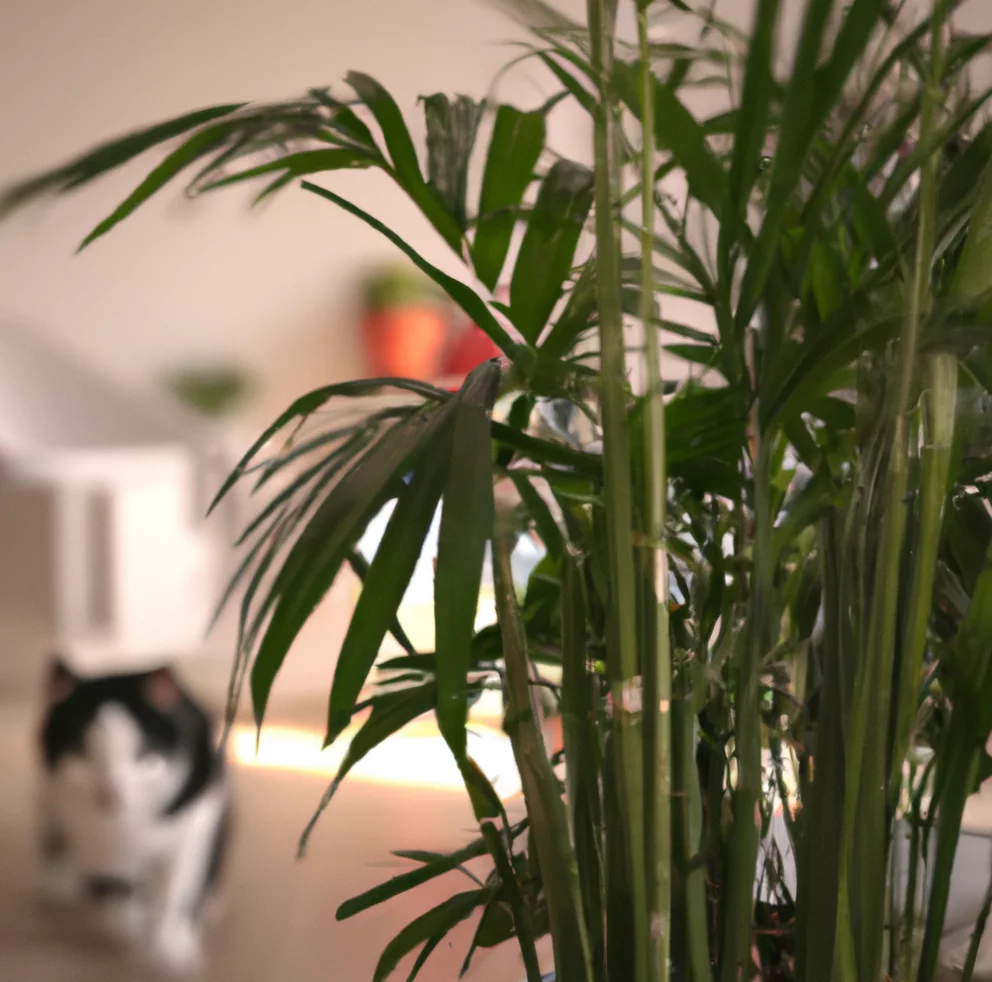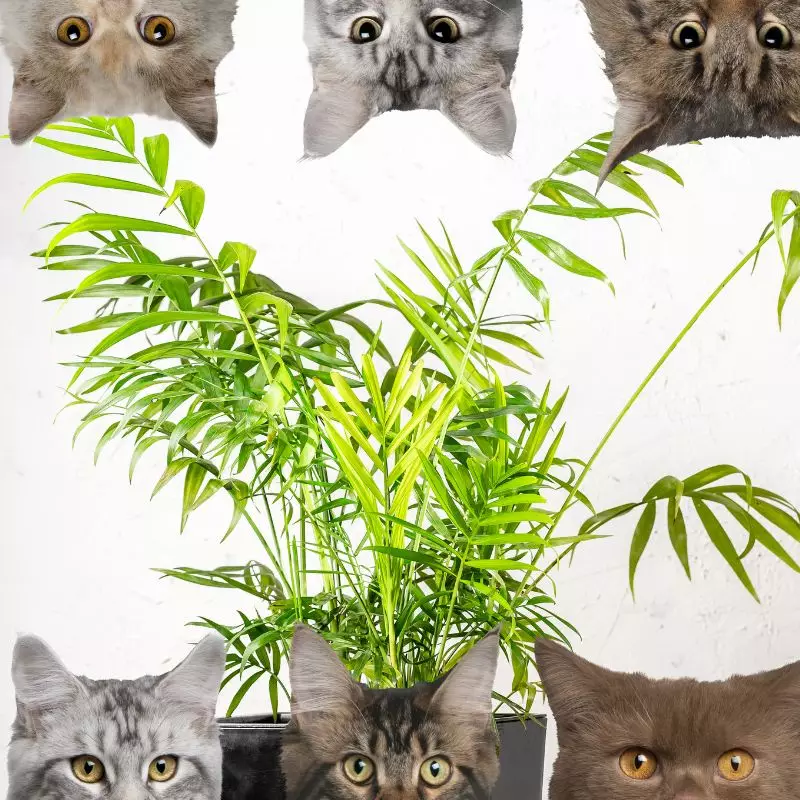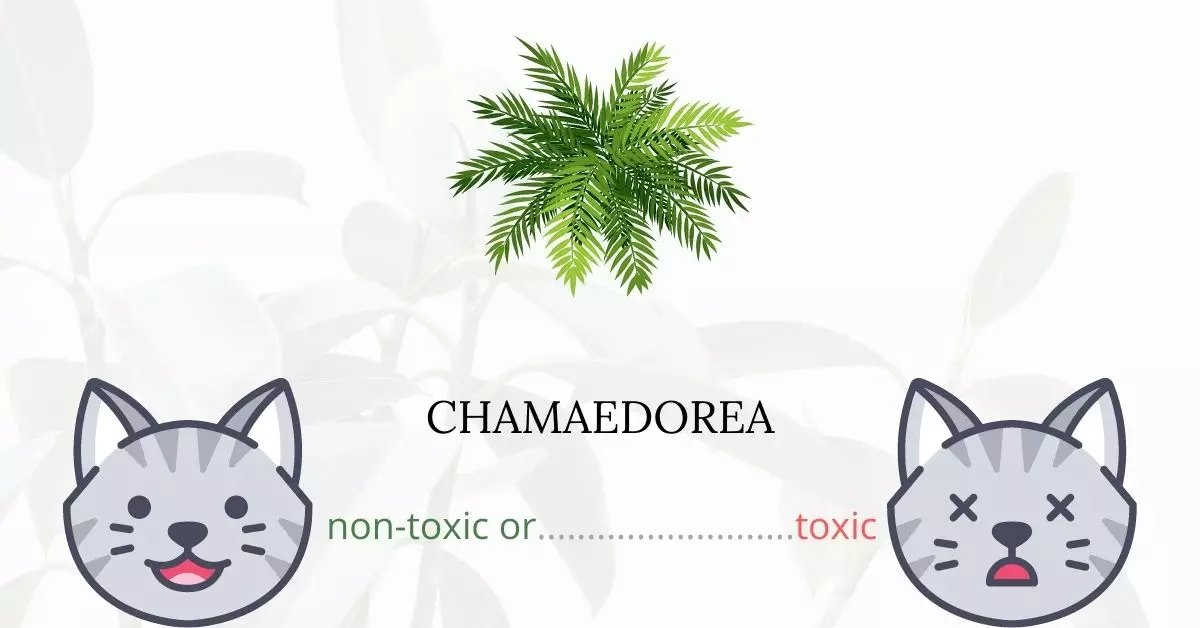Chamaedorea is confirmed to be non-toxic for cats. If you have this plant at home, rest assured, it does not pose a threat to your feline companions.
Through a collaboration with a team of experienced DVMs (doctors of veterinary medicine), we are able to provide you with accurate and up-to-date information regarding the potential risks associated with various plants, Chamaedorea being one of them. Our in-depth research, supported by high-authority websites such as the ASPCA and PetMD, reaffirms that Chamaedorea is safe for both cats and dogs.
While Chamaedorea is not harmful to cats, this doesn’t necessarily mean it’s suitable for cat consumption. In this article, we delve deeper into the safety of this plant and provide tips on how to deter your cats from nibbling on your greenery.
Can Cats Eat Chamaedorea?

Chamaedorea can be eaten by cats. This plant is safe for cats to consume since it has no toxic chemicals. However, we continue to encourage cat parents to ensure that their cat is not consuming an excessive quantity of plant material.
It is difficult for your cat to completely digest plant matter because he or she does not have the enzymes to process it. If your cat has eaten a huge amount of plants, he or she may experience gastrointestinal issues and develop symptoms such as vomiting, and diarrhea. No need to worry though because the symptoms will subside once the plant material has been eliminated from the body.
It is also important to know that toxicity may occur if your cat consumes plant material that has chemical residues from commercial fertilizers and pesticides. As a responsible cat parent, always be mindful of using fertilizers, pesticides, deterrents, and other chemicals that can be used on plants.
What is Chamaedorea?

Chamaedorea is a genus of 107 palm species endemic to the Americas’ subtropical and tropical areas. They’re little palms with cane-like stalks. They often grow in the understory of rainforests, spreading by subterranean runners to create clonal colonies. Chamaedorea leaves have one to several leaflets and are pinnate (rarely whole). The blooms are dioecious and produced in inflorescences. The fruit is a drupe that might be orange or crimson.
Chamaedorea Elegans, from Mexico and Guatemala, are one of the most well-known species. It’s a popular houseplant, especially in Victorian homes. This Arecaceae plant is popular as an indoor palm because it can live in conditions where other plants cannot. Chamaedorea leaves are gracefully spread out and droop. When grown outside in a temperate zone, it may reach heights of six to seven feet and widths of two to three feet. On the other hand, it can only grow two to seven feet tall as a houseplant.
Chamaedorea is known for its common names including Miniature Fish Tail Dwarf Palm, Parlor Palm, and Good Luck Palm.
Keeping Cats Away From Chamaedorea

Preventing your cats from getting near your plants will not only safeguard your cats but will also keep your plants from getting damaged.
Placing your Chamaedora in a place where your cat cannot access would prevent them from getting near it. You can also try using natural deterrents which you can purchase in pet supply stores.
Plants to Avoid For Your Cats
If you are a cat owner and unsure if the plants growing in your yard are harmful to your cats, check out this list of toxic plants for cats. You can also check our list of non-toxic plants for cats.





